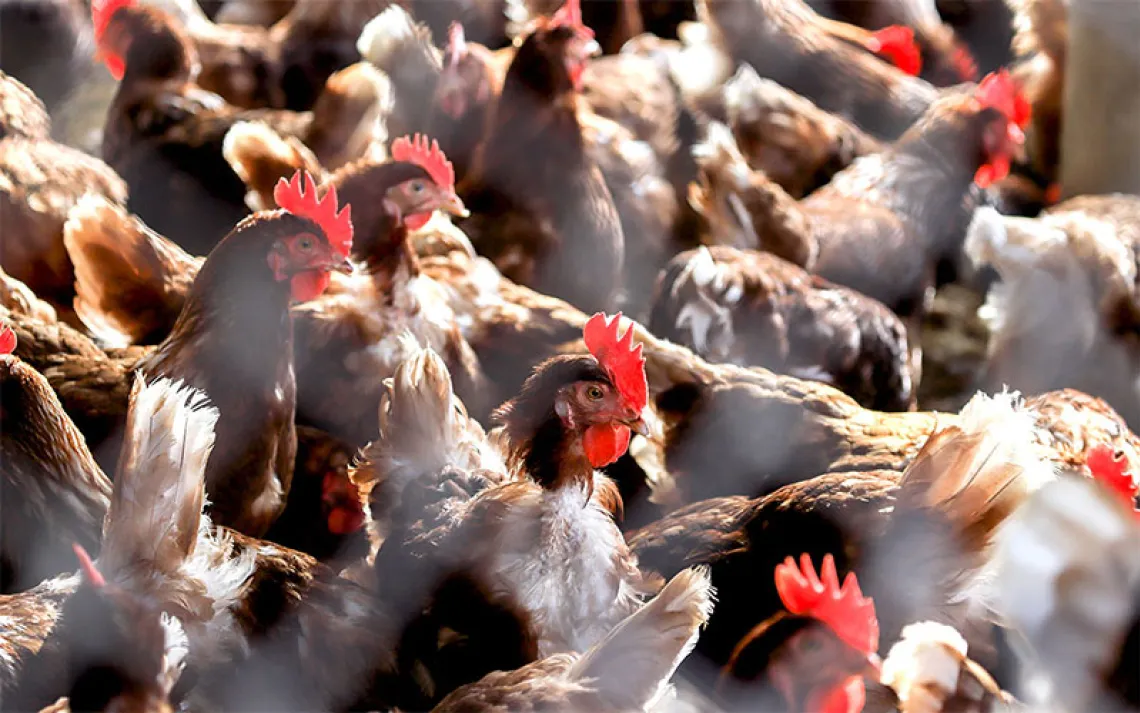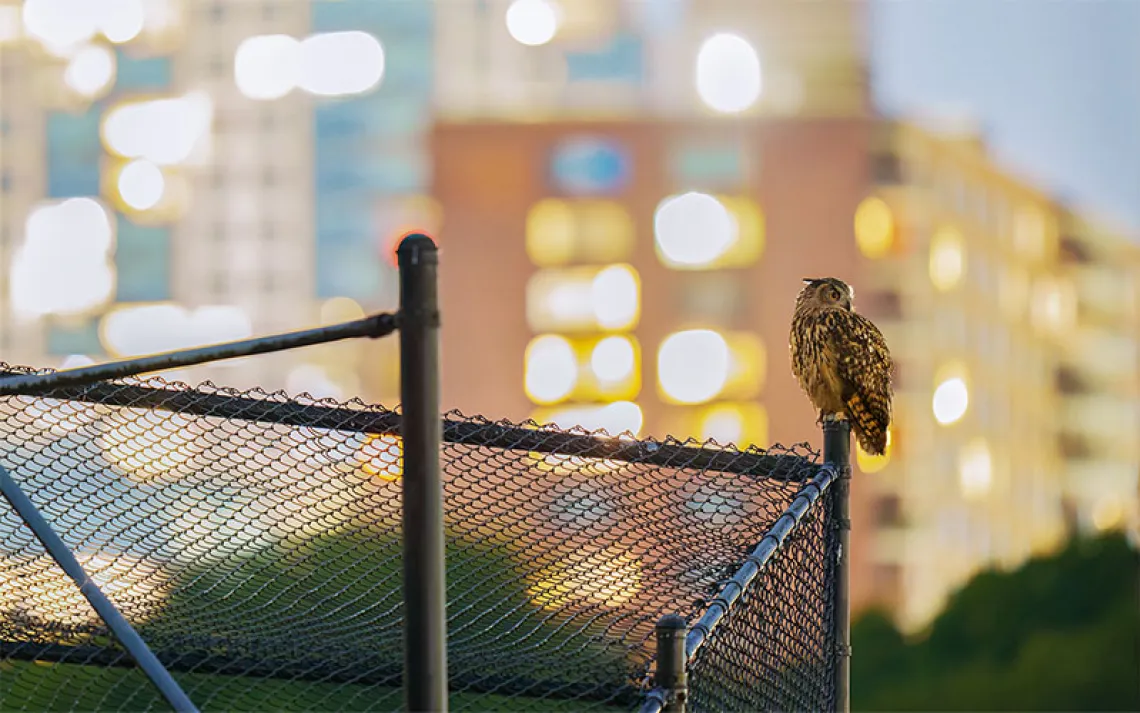6 Exciting Birdwatching Webcams
Vicariously join in on the springtime migration from your couch
Birding is a sport for the intrepid—its participants rise at ungodly hours, bundle in layers, and sit silently for hours, all in hopes of seeing a winged animal that may never arrive. But for those who aren’t quite ready to trek outdoors into wintry-remnant weather, or who might be stuck in front of a computer when they wish they weren’t, there’s another, tamer option. Indeed, the miracles of modern webcam and streaming technology have afforded even the lowliest of couch potatoes ample portals into a variety of avian worlds. And the advent of spring means that flocks of migratory birds are en route north from their winter haunts—which means it’s about to be primetime for bird cams. Here are a few to watch in the coming months.
The Mississippi River’s Migratory Birds
On a small island in the middle of the Mississippi River’s Lake Onalaska, near the Wisconsin-Minnesota border, stands a slowly rotating camera on a pole. For now, it pans over a still-partially-frozen river where one might catch a glimpse of a bald eagle overwintering in the area. But soon, as the ice melts, the camera will capture all kinds of birds headed north up the Mississippi. The American white pelicans, Caspian terns, sandhill cranes, and cormorants that congregate around the camera on their way to northern breeding grounds are far from alone in their pursuit and pathway. The Mississippi Flyway, as the namesake river’s migration route is called, is the avenue of choice for more than 325 bird species making their way up from the Gulf of Mexico. Tune in soon for a heterogeneous and charismatic mix of feathered friends.
Sandhill Crane Migration
The Platte River might not have the name recognition of the Mississippi, but in the birding community this Nebraskan waterway is synonymous with magnificent spectacle. With over a quarter of a million sandhill cranes stopping over at once during migration season, the event has been hailed as one of the greatest wildlife spectacles on the continent. Fortunately, the indoorsy and non-Nebraskan souls among us are both in luck—the Crane Trust, a nonprofit dedicated to conserving and advocating for the cranes that occasionally call the area home, has set up a camera to capture the phenomenon, which will peak in late March and early April.
The Puffins of Maine
For a long time, the winter whereabouts of Maine’s puffins was a mystery. Brought back from the brink of extinction in the 1970s through a set of innovative conservation techniques, the colorful birds continued to disappear for more than half the year. Steve Kress, founder of Project Puffin and an instrumental figure in the species’ revival, finally landed on the answer in 2014. Turns out the birds haunt a notoriously biodiverse set of underwater mountains and canyons southeast of Massachusetts, spending eight months on the water without touching land. So maybe it’s no surprise that they appear so at ease when viewed through the webcam lens on the small, rocky Seal Island, 21 miles off the coast of Maine, which has been cordoned off as a national wildlife refuge. As this Audubon Society webcam shows, our exotic, colorful-beaked friends take full advantage of the government-sanctioned tranquility, claiming the landmass as their own during the warmer months. They loiter on the island’s so-called loafing ledge, which viewers can see without fear of interference. And if the wide-angle shot of this webcam leaves you yearning for a more intimate vantage, there’s another camera set up in a Seal Island burrow.
Cornell’s Feeder Feed
In the foreground hangs a set of bird feeders, distorted by the wide-angle lens. A small platform lies beneath. In the background, leafless trees surround a lake, which is just beginning to thaw. In frigid Ithaca, New York, spring is a welcome reprieve for birds and residents alike, and fortunately it's fast approaching, with many birds already making use of the free food put out by the Cornell Lab of Ornithology; year-round visitors include blue jays, northern cardinals, American goldfinches, tufted titmice, and red-bellied woodpeckers. Seasonal visitors are just starting to appear: Red-winged blackbirds and common grackles make their way up from the southern United States, traveling 800 miles back to their breeding grounds. In May, Baltimore orioles will arrive, having made the much longer trek from South America. With food so abundant, and space on the platform relatively limited, conflict might even arise. The bloodthirsty would be wise to stay tuned. And for those who crave some supplemental information along with their visuals, @FeederWatchCam provides a running commentary on Twitter.
Osprey on the Chesapeake Bay
On the waters of the Chesapeake Bay in Maryland and Virginia, spring is a time for reunion. Ospreys (Pandion haliaetus) migrate thousands of miles each year to and from Central and South America. They mate for life but often separate in the winter, making the long northern commute alone. One camera, run by the Chesapeake Conservancy on Kent Island, Maryland, has played host to a multiyear drama between one particular osprey couple, Audrey and Tom. Audrey and Tom aren’t home—not yet. For now, the Kent Island camera lists and rotates up from an empty platform to a view of the horizon, as if yearning for the birds’ arrival. But keep an eye on the camera for the nesting and domestic drama that’s sure to ensue any day—in past years, Tom and Audrey have reunited on the island in late March.
Hellgate Osprey Webcam
At the mouth of the Hellgate Canyon, on the outskirts of Missoula, Montana, a camera looks out onto a parking lot, a set of train tracks, and a mountain, still speckled with snow. In the foreground lies an empty nest. The view may be far from pristine, but the traffic doesn’t bother the osprey. Fifty feet away, the Clark Fork River affords a waterfront view and access to prey. With their six-foot wingspan, the birds are known to dive down as deep as three feet into the water while hunting. The couple that make this nest home, Louis and Iris, are expected in early April. Iris is named after her distinctively flawed eye and has frequented the nest for many years, but Louis is a newer addition. Osprey usually mate for life, but after Iris’s longtime partner, Stanley, didn’t return in 2016, Iris took up with a new partner. We’re happy for her; we hope you are too. Last year, they arrived on April 4 and 6, respectively. Earlier this week, the nest’s protective netting was removed in preparation. Those in search of commentary and company during the wait can find both at @HellgateOsprey, the camera's dedicated Twitter handle.
 The Magazine of The Sierra Club
The Magazine of The Sierra Club




